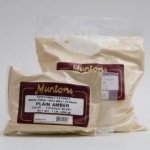hopleaf
Member
years ago when i first began my beer brewing adventure i made all my beer using malt extract. it comes in a powdered dry form which is 100% malt extract, and they also have a liquid malt extract which is 80% malt 20%water. it didn't take me long to upgrade my brew system to an all-grain system making the extracts useless to me. i had always known that malt extract was obviously very high in maltose, sucrose, fructose, and glucose. several vitamin B complexes. such as B1, B2, B6, B12. i always knew that it had inerals as well. as for the minerals it's high in P, K, Mg, Ca, and a small amount of Na. tons of amino acids too, but this stuff is not cheap at all...almost twice the price of molassas.
i began making my compost teas with the malt extract along side of the molassas to create a more complete carbo and mineral make up for my teas.
just thought i'd offer my knowledge of another carbo source that is very similar to the wonderful molassas. i love it becuase as a brewer i like to be able to use left over brewing stuffs to grow my buds. nothing like adding used grains to the compost heap. full of protiens and sugars that all those little decomposers love.
go check your grandpa's basement for an old can of some malt extract and give it a try next time you run out of molassas.
i began making my compost teas with the malt extract along side of the molassas to create a more complete carbo and mineral make up for my teas.
just thought i'd offer my knowledge of another carbo source that is very similar to the wonderful molassas. i love it becuase as a brewer i like to be able to use left over brewing stuffs to grow my buds. nothing like adding used grains to the compost heap. full of protiens and sugars that all those little decomposers love.
go check your grandpa's basement for an old can of some malt extract and give it a try next time you run out of molassas.



